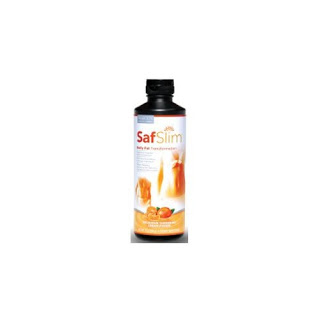With so many questionable weight loss products and programs, more often than not when asked to investigate the latest system or scam I find a whole lot of exaggeration and risk. I’d be lying if I said I didn’t enjoy denouncing dietary disasters. So when clients came in inquiring about Safslim supplements plugged by Montel Williams on the Dr Oz show, I was secretly excited to expose the “truth” and let them have it. I mean “Safslim” sounds so suspicious.
First, A Look at the Research
A 2009 study in the American Journal of Clinical Nutrition found obese, post menopausal women lost 6.3 % of abdominal fat and gained lean muscle mass taking safflower oil capsules with no change in diet or exercise. Their blood sugar levels improved, as did insulin sensitivity. The glucose improvements may have been a result of the reduction in stomach fat. Another study, with a similar study population, confirmed these results and found safflower oil also improved HDL or “good cholesterol”. Anyone has worked with post menopausal women knows a reduction in abdominal fat isn’t easy to achieve.
Interesting, can’t bash at all based on this but these are the only two studies I found.
What dose is needed, how do different brands compare?
Safslim is not organic and is more expensive than other brands. It’s also a flavored liquid sweetened with xylitol and I’m not sure that’s necessary here. The dose used in the studies and suggested by Safslim is 6-8 grams per day which for this product is two tablespoons.
Are there risks? Is there a way to benefit without a supplement?
This is where it gets tricky. The predominant oil in Safslim and many other capsules is linoleic acid though other fatty acids are present. The better safflower for cooking and more stable is “high oleic” variety that has a higher smoke point. Food sources of linoleic acid are sunflower seeds, pine nuts, hemp (for example safflower is 78% linoleic and the fat in hemp 60%) and pecans. If your organic chemistry isn’t fresh in your mind (linoleic is 18:2n-6) or if you need a fatty acid primer, there is a good one here.
Would I suggest this?
I wouldn’t suggest the supplements yet. There’s not a lot of research, none on non-obese or male subjects, and I don’t quite get the mechanism acting here. Safflower gets converted to GLAs (black currant, evening primrose are GLAs) which have great effects on PMS and skin so these are other potential benefits. I just don’t feel the case is strong enough to supplement for three to four months as the studies did. I will admit, after reading about this I had my favorite Kaia raw sunflower seeds for a snack. I think this is a topic to keep an eye on. My math says 1.5 tsp. regular (not high oleic) safflower oil or ½ ounce sunflower seeds would give you the 6-8 grams of polyunsaturated acid used in the studies. These fats should replace other fats in your diet or you’re looking at adding close to 100 calories to your daily intake. So I’m not sure I would suggest following the “Montel” diet but there appears to be something to this safflower thing, I’m just not sure what.
Addendum (Summer 2012)
It seems my clients are less cautious than I am. After I posted this many of them felt why not try Safslim and they did and they reported back. The vast majority were pleased. I also received emails and blog comments attesting their satisfaction with this product. What can I say? I went from a skeptic to a believer. I don’t think you have to but if you’re concerned have Safslim with your means and skip either your mid morning or after dinner snack to compensate for the added calories.
Addendum (Summer 2012)
It seems my clients are less cautious than I am. After I posted this many of them felt why not try Safslim and they did and they reported back. The vast majority were pleased. I also received emails and blog comments attesting their satisfaction with this product. What can I say? I went from a skeptic to a believer. I don’t think you have to but if you’re concerned have Safslim with your means and skip either your mid morning or after dinner snack to compensate for the added calories.
Did you hear about safflower supplements? What do you think of the information above? Would you supplement or increase dietary linoleic acid based on what you know?


